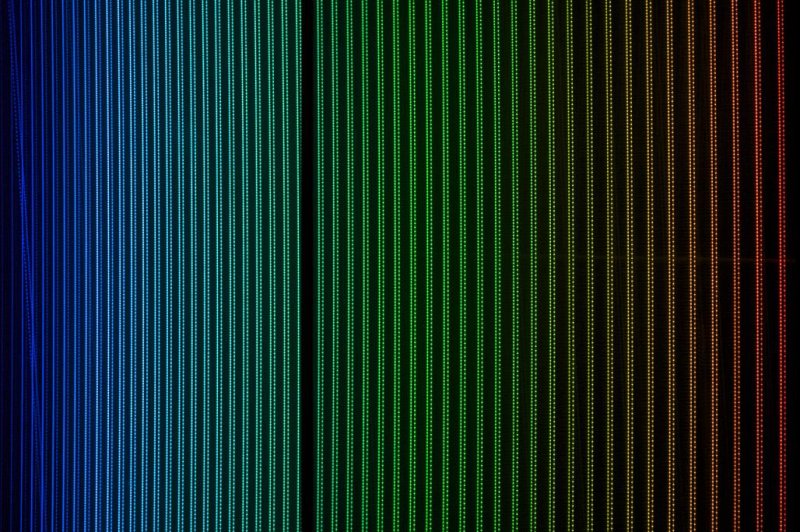Researchers used a pair of frequency combs, which produce a spectrum of sharp, equally spaced frequency lines, to analyze the spectral properties of molecules in a gas mixtures. Photo by ESO/
CC
Sept. 29 (UPI) -- Scientists have developed a new laser-based spectroscopic method for identifying potentially dangerous gasses. The method, which relies on the combination of two spectroscopic techniques, could be used to more quickly and accurately identify explosives and other dangerous substances.
The first technique, called multi-dimensional coherent spectroscopy, relies on short laser pulses. When bounced through a mixture of gases, scientists can measure which wavelengths are absorbed and use their observations to identify the gas molecules.
"If you have light going through the gas, and, for example, you use a prism to separate white light into colored light, in the rainbow spectrum you'd see there'd be black stripes," Steven Cundiff, a physics professor at the University of Michigan, said in a news release. "Where the black stripes are almost gives you a barcode that tells you what kind of molecule is in the sample."
Similar methods have previously been used to identify single gas samples, but a more complex method was needed to analyze gas mixtures. Until now, scientists have had to rely on supercomputers to reference catalogues of molecular data when analyzing gas mixtures.
"It's like trying to look at three people's fingerprints on top of each other. This is a stumbling block for using these methods in a real-world situation," Cundiff said. "Our method takes about 15 minutes to a few hours using traditional approaches to MDCS."
Scientists accelerated the processing time by marrying MDCS with another method called dual comb spectroscopy. Frequency combs produce a spectrum of sharp, equally spaced frequency lines. The lines work like a ruler and are used to measure the optical frequencies of atoms and molecules. A pair of combs can be combined to efficiently analyze the spectral qualities of a collection of molecules.
"This approach could allow the method of multidimensional coherent spectroscopy to escape the lab and be used for practical applications such as detecting explosives or monitoring atmospheric constituents," Cundiff said.
Cundiff and his Michigan colleague, Bachana Lomsadze, used their newly developed method to analyze a sample of rubidium atoms featuring a mix of atomic isotopes. The spectral difference between the two isotopes are too subtle to be measured using MDCS alone. But when researchers combine MDCS with a pair of frequency combs, they were able to accurately identify the different spectral lines produced but the two isotopes.
Cundiff, Lomsadze and their fellow researchers detailed their work in a new paper, published this week in the journal Science. The scientists plan to add a third laser in subsequent tests to further speed up the identification process.















